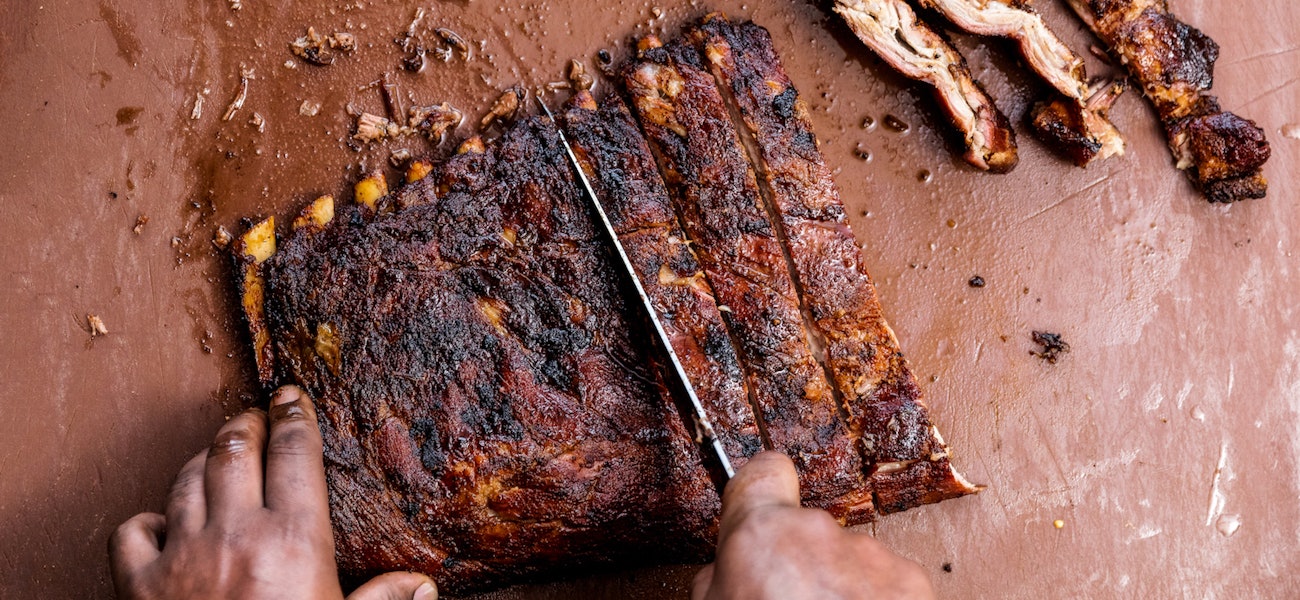Correction: This story has been updated to correct the spelling of Paul Mladenka’s name.
Barbecue fans are having a rough summer.
For months, meat prices have been steadily creeping up nationwide. Depending on the cut of meat, some have doubled, or even tripled, from this time last year. And it’s not just meat. Restaurants also report that produce is up, as are paper products and to-go containers.
“We’ve seen an increase across the board on everything, from food to labor to paper goods, since COVID,” Cou-yon’s Bar-B-Q owner Paul Mladenka says. “But over the last four months, we’ve seen an unbelievable rise in the price of brisket, ribs and wings.”
|
|
|
Other Baton Rouge area restaurant operators tell a similar story.
“It’s been crazy,” BRQ chef partner Justin Ferguson says. “Beef has doubled for the most part. We go through over 2,000 pounds in a week. And when that doubles in price, we can’t really double our menu price, so it’s been a major hit. We had to take ribeyes off our menu because what we’d have to sell them for, no one’s going to want to pay.”
Brisket has tripled in price and is now on par with past prices of its Wagyu equivalent, Ferguson says. Shrimp and lump crabmeat are also at an all-time high, he says.
“Lump crabmeat has gone from $23 a pound to $40,” Ferguson says.
Curbside Burgers and The Overpass Merchant owner Nick Hufft says he’s seen a 20% increase in ground beef prices and other goods over the last six to eight months.
“It’s the whole industry, across the board,” Hufft says. “And it’s not just food costs, but to-go containers. We haven’t passed that cost on yet, but that’s been tough.”
The nationwide spike in meat prices, in particular, is due to a number factors, economists say. Transportation costs are high, and so is grain. Labor shortages, already a thorny issue for the server-starved restaurant industry, are causing supply chain slowdowns in meatpacking plants. Meanwhile, demand for meat is up across the country as onsite dining returns to normal. Moreover, demand for beef in China has also risen significantly in the last year.
“It’s almost been a perfect storm,” City Group Hospitality partner Stephen Hightower says. “Ribs are off the charts. Wings are hard to come by, and prices are skyrocketing on those, still. We did see some softening in beef prices last week, but the price of pork is still up there.”
Even if meat prices begin leveling off soon, say operators, they’ll do so at a rate far higher than this time last year, and even earlier this spring.
According to the U.N.’s Food and Agricultural Organization, the global Food Price Index was up 4.8% between April and May, the biggest month-on-month gain since 2010. In addition, the Food Price Index increased nearly 40% from the same period one year ago.
“We haven’t seen a let-up on price increases with meats,” Blaise Calandro of Calandro’s Supermarkets says. “We get a price book every week from our suppliers, and in the column where it designates if a price is staying the same, going down or going up, we see pretty much nothing but increases. It’s been a row of plus signs.”
Like other supermarkets, Calandro’s meat prices are now higher for consumers, but they still represent a lower profit margin for the grocery store, Calandro says.
“We are taking a hit,” Calandro says. “We’re still waiting for the pendulum to swing back. But when it finally does, it’s got a long ways to go before it gets back to normal.”
Restaurants and caterers have been figuring out how to weather what they hope is a temporary problem.
“When something like this this happens, you’re faced with a few choices if you want to stay in business,” Mladenko says. “You can raise your prices. You can cut your portions. Or you can use a different product. We’re not going to cut quantity or quality, so we had to raise our prices. They’re the highest they’ve been in 12 years in business. We hope to bring them back down when prices come down.”
High protein prices will likely also be felt in fall tailgating and special events, including the Baton Rouge Epicurean Society’s annual food and wine gala, Fête Rouge, which features dozens of restaurants donating and serving bite-sized entrees, sides and desserts to more than 900 ticket holders.
“We’re asking a bunch of restaurants to donate their time and product, and it’s really hard to do that when so much of what they make uses proteins,” Mestizo Louisiana Mexican Restaurant owner and BRES board president Jim Urdiales says. “I see the product price increase in my own restaurant with skirt steak, which is astronomical.”
Culinary arts programs are also struggling with food price increases, says Louisiana Culinary Institute Director and Chef Instructor David Tiner.
“We have observed the increase in prices, mostly on proteins, but also on paper goods and plastic containers,” Tiner says, adding that some products have also been hard to find.
“Whole chickens is one,” Tiner says. “We go through a lot of whole chickens in our classes, because we teach our students to break them down. They’ve been in short supply. We buy as many as we can each week and freeze them.”
|
|
|
Tiner says LCI’s culinary leisure classes have tweaked what proteins they feature in order to help absorb price increases. “Instead of a beef tenderloin, we might do a pork tenderloin,” he says.
How long restaurants can hang on without increasing menu prices is anyone’s guess, but it won’t last forever, many say. “We’re trying not to, but at some point, I think our customers are going to be understanding if we do,” Hufft says.
Ferguson says BRQ is eating most of the cost increase now, hoping that prices will fall soon. “But at some point,” he says, “ everybody’s going to have to pass it on.”





